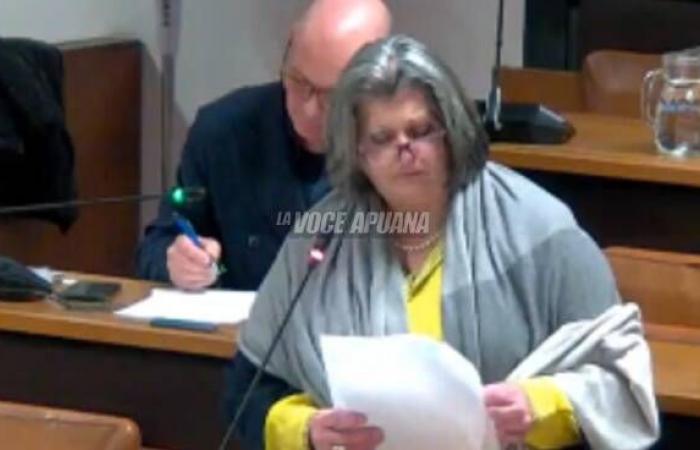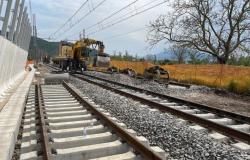CARRARA – Safety and culture: this seems to be the direction approved by the entire city council to revive the territory from degradation. So the other evening, after having unanimously voted on some measures for the protection of the safety of the citizens of Avenzino, including the restoration of a Municipal Police station in the neighborhood (here), the Council unanimously voted on the motion with which it commits to begin the procedure to enroll that extraordinary artistic testimony that is the Marcognano cemetery in the network of significant cemeteries. The motion was born from an initiative by councilor Maria Mattei who illustrated in the Chamber all the details and perspectives that would open up if this recognition were to arrive. “The recognition of a monumental cemetery – he made the point to the councilor – would entail the registration of significant cemeteries in the Atlas, which would in turn allow them to be part of tourist routes such as the Route of European Cemeteries which are connected to slow, widespread tourism and sustainable.” The opposition councilor recalled, to give an example and help understand the extent of the potential, how the monumental cemetery of Milan is the second most visited monument in the city.
“The Marcognano – describes it Maria Mattei – tells the story of Carrara, tells the culture and artistic craftsmanship of our city. It is necessary to protect and enhance this place of memory and work to ensure that it enters the network of significant cemeteries, following the provisions of the memorandum of understanding signed by Minister Franceschini in 2016 and by Utilitalia Sefit (Italian Funeral Services). The invitation that councilor Filippo Mirabella addressed to the administration regarding this open-air museum – said the councilor – gives me the inspiration for this proposal. There is no doubt that the Marcognano cemetery is one of the places of memory dearest to the Carrara people, if only because 10 quarrymen who died in the Bettogli tragedy in 1911 are buried there. An expanse of gravestones that the Nobel Prize winner Luigi Pirandello visited in Carrara he said that they reminded him of the deaths of the sulfur mines in his Sicily. The beauty of Marcognano was told by Beniamino Gemignani, by Giovanna Bernardini, by Riccardo Mazzoni who carried out the cataloging of a large selection of the historical-artistic heritage for the Superintendency and by the archaeologist Cristina Barandoni. Even the theater found space among its marbles and in 2010/2014 Marcognano was transformed into a sort of Apuan Spoon River. This is a significant amount of work, the one I am mentioning, that can be used immediately to obtain recognition from the Association of Significant Cemeteries in Europe (ASCE). Marcognano is a photograph of white marble that collects 100 years, the entire 20th century, between neoclassicism, romanticism, neo-liberty and symbolism and which therefore allows us to read the evolution of architecture, sculpture and artistic craftsmanship of marble of funerary art, for which Carrara was recognized as a UNESCO Creative City. Marcognano is the perfect image of the history of our community marked by pandemics, wars and the presence of sculptors”.
This is the premise of the councilor who therefore, at this point, concretely suggests how to proceed. “The Tuscany Region – explains Maria Mattei – unfortunately does not have a law that dictates the rules for the development, conservation and enhancement of significant cemeteries, unlike Emilia-Romagna which is the only one in Italy to have one. But – she adds – there is this 2016 protocol which is precious because it provides for the implementation of shared actions for the tourist promotion and cultural valorisation of significant cemeteries and places of memory. I remember that Milan with its monumental cemetery is in 2nd place among the most visited monuments in the city. Becoming part of this network means becoming part of the prestigious Atlas of significant cemeteries on the map of the paths of Italy, it means being recognized as a stop on tourist routes and I refer to the important segment of slow, widespread and sustainable tourism. Becoming part of the Atlas of significant Italian cemeteries means accessing the Ministry’s interventions in support of monumental cemeteries and identifying state or European funds for restorations and renovations: vital interventions also in Marcognano to combat degradation and protect works at risk. An effort is therefore needed to obtain recognition and I invite you not to fear comparisons with Staglieno, Milan or Rome because nearby La Spezia already appears in the Atlas of significant cemeteries with the monumental cemetery of Boschetti, which among other things has strong references to Carrara thanks to the burial of the victims of the explosion of the powder magazine at the Pirelli Pier in 1916. Marcognano is a treasure chest that immediately reveals to visitors the powerful and poignant beauty of our monuments and has what it takes for this recognition as a significant cemetery, as defined by Mibact”.






